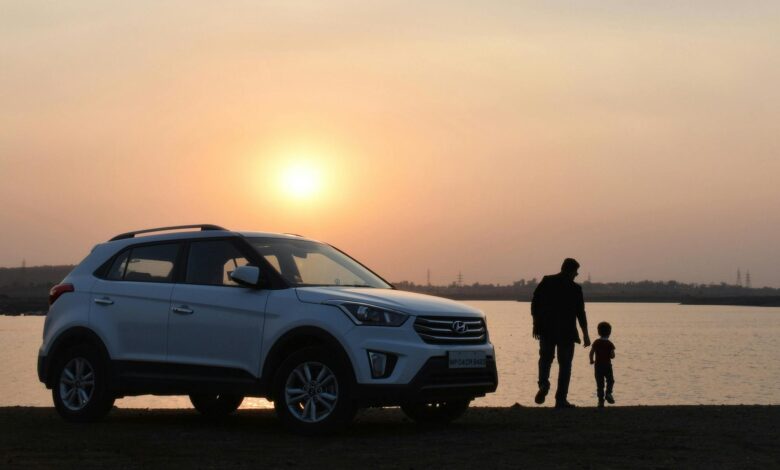What is Full Coverage Car Insurance? A Comprehensive Guide

When it comes to protecting your vehicle and ensuring peace of mind on the road, understanding car insurance options is essential. Among the various types of coverage available, full coverage car insurance often stands out as a popular choice for drivers seeking comprehensive protection. But what exactly does “full coverage” mean? How does it work, and is it the right option for you? In this guide, we’ll explore everything you need to know about full coverage car insurance, breaking down its components, benefits, and considerations.
What Does Full Coverage Car Insurance Mean?
Contrary to what the term might suggest, “full coverage” car insurance doesn’t mean that your policy will cover every possible scenario under the sun. Instead, it’s an industry term used to describe a combination of two primary types of coverage: liability insurance and physical damage coverage . Together, these components provide a robust safety net for drivers, protecting them from a wide range of risks associated with owning and operating a vehicle.
Key Components of Full Coverage Car Insurance
- Liability Coverage
- Liability insurance is mandatory in most states and serves as the foundation of any car insurance policy. It covers damages or injuries you cause to others in an accident where you are at fault.
- This includes:
- Bodily Injury Liability : Covers medical expenses, lost wages, and legal fees if someone is injured due to your actions.
- Property Damage Liability : Pays for repairs or replacement of another person’s property (such as their car) that you damage in an accident.
- Collision Coverage
- Collision insurance covers the cost of repairing or replacing your vehicle if it’s damaged in a collision with another car or object, regardless of who is at fault.
- For example, if you accidentally hit a tree or another vehicle, collision coverage will help pay for the repairs to your car.
- Comprehensive Coverage
- Comprehensive insurance protects your vehicle against non-collision-related incidents. These can include theft, vandalism, natural disasters, falling objects, fire, and even hitting an animal.
- Think of it as a safeguard against the unexpected events that life throws your way.
- Additional Coverages (Optional but Commonly Included)
- Many full coverage policies also include optional add-ons such as:
- Uninsured/Underinsured Motorist Coverage : Protects you if you’re involved in an accident with a driver who lacks sufficient insurance.
- Medical Payments (MedPay) or Personal Injury Protection (PIP) : Covers medical expenses for you and your passengers, regardless of fault.
- Rental Reimbursement : Helps pay for a rental car while your vehicle is being repaired after a covered claim.
- Towing and Labor Costs : Provides assistance for roadside emergencies like flat tires or dead batteries.
- Many full coverage policies also include optional add-ons such as:
Why Choose Full Coverage Car Insurance?
Full coverage car insurance offers several advantages, making it an attractive option for many drivers. Here are some reasons why people opt for this type of policy:
1. Comprehensive Protection
With both liability and physical damage coverage included, full coverage ensures that you’re protected in almost every conceivable situation. Whether you’re at fault in an accident or your car is stolen, you have financial support to fall back on.
2. Peace of Mind
Knowing that you’re covered for a wide array of risks can significantly reduce stress. You won’t have to worry about footing the bill for expensive repairs or lawsuits resulting from an accident.
3. Lender Requirements
If you financed or leased your vehicle, your lender will likely require you to carry full coverage insurance. This ensures that their investment is protected in case something happens to the car.
4. Higher Resale Value
Maintaining full coverage can help preserve the value of your vehicle by ensuring timely repairs and proper maintenance following an incident.
Is Full Coverage Right for Everyone?
While full coverage car insurance provides extensive protection, it may not be the best fit for everyone. Before deciding, consider the following factors:
1. Cost vs. Benefit
Full coverage typically comes with higher premiums compared to liability-only policies. If your car is older or has depreciated significantly in value, paying for collision and comprehensive coverage might not make financial sense.
2. Vehicle Value
Evaluate the current market value of your car. If repair costs would exceed the car’s worth, opting for liability-only coverage could save you money in the long run.
3. Driving Habits
Your driving habits and risk tolerance play a role in determining whether full coverage is necessary. For instance, if you rarely drive or live in a low-risk area, you might feel comfortable with less coverage.
4. Financial Situation
Consider your ability to handle out-of-pocket expenses in the event of an accident. If you have savings set aside for emergencies, you might prefer a policy with lower premiums.
How Much Does Full Coverage Car Insurance Cost?
The cost of full coverage car insurance varies based on several factors, including:
- Location : Urban areas tend to have higher rates due to increased traffic and crime.
- Driving Record : Safe drivers with clean records usually qualify for discounts.
- Age and Gender : Younger drivers and males often face higher premiums.
- Type of Vehicle : High-performance or luxury cars are more expensive to insure.
- Deductibles : Choosing a higher deductible can lower your premium but means you’ll pay more out-of-pocket when filing a claim.
On average, full coverage car insurance costs between $100 and $200 per month, though prices can vary widely depending on the factors mentioned above.
Tips for Getting the Best Deal on Full Coverage Car Insurance
If you decide that full coverage is right for you, here are some tips to help you secure the best deal:
- Shop Around : Compare quotes from multiple insurers to find the most competitive rate.
- Bundle Policies : Many companies offer discounts if you bundle auto insurance with other types of coverage, such as home or renters insurance.
- Maintain a Good Credit Score : Insurers often use credit scores to determine premiums, so keeping yours high can lead to savings.
- Take Advantage of Discounts : Look for discounts related to safe driving, anti-theft devices, low mileage, and more.
- Review Your Policy Regularly : As your circumstances change, adjust your coverage accordingly to avoid overpaying.




